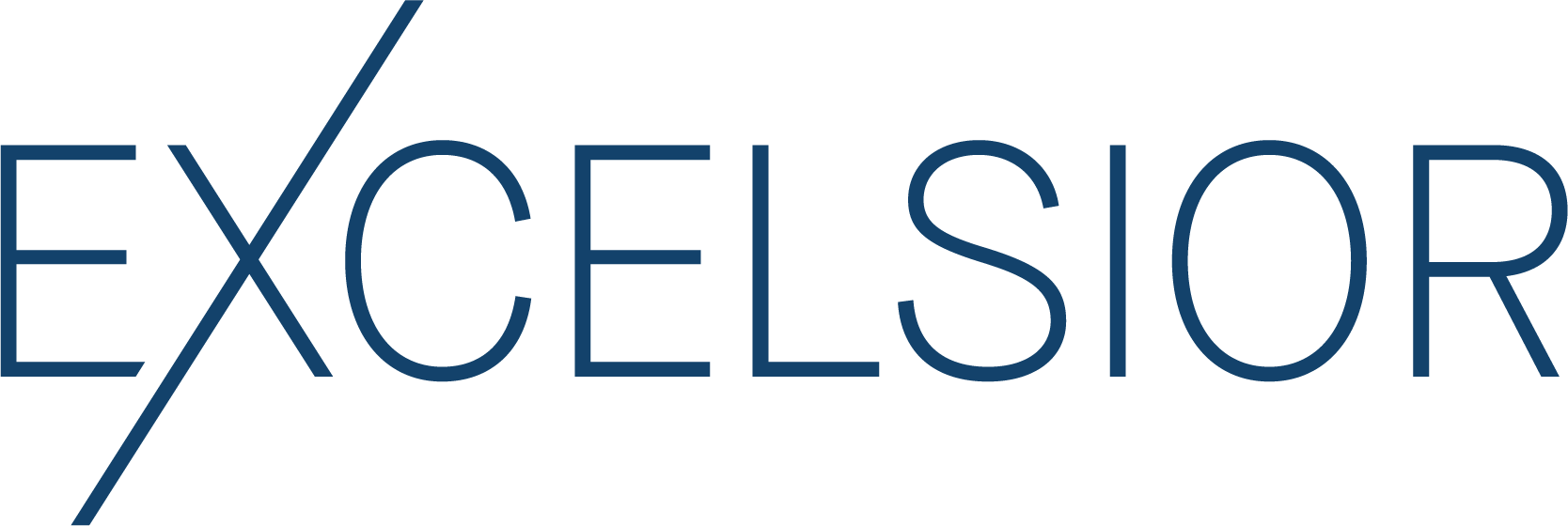FM Focus Equity ETF
Bringing The Long View Into Focus
FMCX: An Overview

Download Our Annual Shareholder Letter

Thanks for your interest in FMCX! The Shareholder letter has been downloaded.
ABOUT FMCX

FM Focus Equity ETF (FMCX) seeks to invest in the highest-conviction ideas of First Manhattan’s experienced, dedicated research team.
We seek to compound capital over the long term, pursuing enduring success across industries and market cycles, guided by First Manhattan’s fundamental investment principles honed over nearly six decades.
FMCX comprises a tax efficient, actively managed portfolio of large- and mid-cap predominantly U.S. stocks positioned for long-term compounding, low turnover, and competitive fees.
Equity Exposure
FMCX targets a focused portfolio of 25-30 U.S. publicly traded companies.
Quality at a Reasonable Price
Our investment process, honed over nearly six decades, is centered on selecting stocks underpinned by high-quality businesses, management teams, and earnings streams.
Long-Term Horizon
We favor long-term holdings in companies that we believe possess durable competitive advantages, earn higher-than-average returns on capital, treat shareholders like partners, and have opportunities to reinvest cash profits at attractive rates of return.
Research-Driven
Our research team, consisting of 10 investment professionals* including sector-focused analysts, conducts extensive due diligence to assess the growth potential and soundness of current and prospective holdings. We hold over 100 meetings per year on average* with portfolio company management teams and 75-100 meetings per year on average* with industry experts.
Cost-Effective
The FMCX expense ratio is 0.70%, below the average all-cap equity fund, which is closer to 1%*. There is no minimum investment requirement.
INSIGHTS
Himayani Puri

EXPERT LEADERSHIP
Himayani Puri, the Portfolio Manager for FMCX, leads a team of 10 investment professionals, including in-house industry analysts with knowledge and expertise of their respective sectors. She is a Partner and the Head of Research for First Manhattan and a member of First Manhattan’s Management Committee. She has over 27 years of experience as a value-oriented investor across multiple industries and cycles.
For more than 18 years, Himayani has been entrusted with building, managing, and leading effective investment research efforts. Prior to joining First Manhattan in 2018, she held senior roles at other investment firms, including as Partner, Portfolio Manager, and Director of Research.
Himayani is a graduate of the Management & Technology dual-degree Program at The University of Pennsylvania. She holds a BS in Economics—with concentrations in Finance and Management—from the Wharton School and a BAS in Systems Engineering from the School of Engineering and Applied Science.
WHY CONSIDER FMCX?
Engagement
Dialogue with the management teams of our current and prospective holdings helps us assess the quality of the business, its valuation, management, earnings, and the potential for reinvestment opportunities.
Diligence
Our rigorous analytical research and bottom-up stock selection also considers a company’s governance, durability, and culture to form a conviction-weighted portfolio.
Discretion
Unlike most traditional ETFs, FMCX does not make public what assets it holds on a daily basis, but rather sixty days after the end of each quarter. We strive to protect our investment strategy so it can better serve our investors.
Experience
FMCX is rooted in the principled approach to rigorous fundamental research and bottom-up stock selection that has been an integral part of First Manhattan since its founding in 1964. The FMCX research team has a combined cumulative investing experience of 126 years.*
Transparency of Process
We strive to make the investment process transparent and straightforward. FMCX investors will have opportunities to engage with the ETF’s Portfolio Manager, who can further explain disclosed positions, how they contribute to the portfolio, and the investment process and rationale.

WHO IS FIRST MANHATTAN?
A $31B+ AUM* investment advisory firm with nearly six decades of experience in compounding wealth over the long term, First Manhattan diligently manages clients’ assets through rising and falling markets and shifting economic conditions. Central to the firm is a deeply rooted commitment to research. Portfolio construction across First Manhattan is supported by the work of a dedicated research team consisting of senior analysts who focus on the fundamental work needed to evaluate businesses from the bottom up, with the goal of identifying a portfolio of companies believed to have the highest potential of generating outperformance over the long term.
Since its founding in 1964, First Manhattan has been independently owned and operated.
We use deep fundamental research to identify companies for investment. We seek to purchase shares at valuations that are favorable relative to the quality of the company’s business, its earnings, and our expectation for long-term growth in value-per-share.
– Himayani Puri
Partner, Head of Research, and FMCX Portfolio Manager, First Manhattan
Through various operating subsidiaries, FMC Group Holdings LP (*First Manhattan*) provides a range of brokerage and investment advisory services. First Manhattan Securities LLC (Member SIPC, FINRA, NYSE, and MSR8), a wholly ovined subsidiary of First Manhattan, is a registered broker-dealer. First Manhattan Co. LLC, a wholly owned subsidiary of First Manhattan, is an investment adviser registered with the SEC. None of First Manhattan, its affliates, and its or their personnel provide banking services or legal, tax, or accounting advice.
* Data as of December 2023.
Risk and Additional Disclosures
Investors should consider the investment objective, risks, and charges and expenses of the Fund(s) before investing. The prospectus and summary prospectus contain this and other information about the Fund(s) and both should be read carefully before investing. The prospectus may be obtained at 888.530.2448 or www.fmcx.com.
This ETF is different from traditional ETFs – traditional ETFs tell the public what assets they hold each day; this ETF will not. This may create additional risks. For example, since this ETF provides less information to traders, they may charge you more money to trade this ETF’s shares. The price you pay to buy or sell ETF shares on an exchange may not match the value of the ETF’s portfolio. These risks may be even greater in bad or uncertain markets.
Index performance does not represent the Fund’s performance. It is not possible to invest directly in an index.
S&P 500 Index: The S&P 500 Index is a stock market index that tracks the performance of 500 large companies listed on stock exchanges in the United States.
Exchange Traded Funds (ETFs) are bought and sold through exchange trading at market price (not NAV) and are not individually redeemed from the Fund. Shares may trade at a premium or discount to their NAV in the secondary market. Brokerage commissions will reduce returns.
Northern Lights Distributors, LLC is not affiliated with First Manhattan. Investing involves risk, including loss of principal. There is no guarantee that the Fund will achieve its investment objective. The Adviser’s judgments about the growth, value, or potential appreciation of an investment may prove to be incorrect or fail to have the intended results, which could adversely impact the Fund’s performance and cause it to underperform relative to other funds with similar investment goals or relative to its benchmark. Investing in a limited number of companies, such as the Fund does, carries more risk than might be the case if the portfolio were more diversified because changes in the value of a single company may have a more significant effect, either negative or positive, on the Fund’s value. The Fund is a new ETF with a limited history of operations for investors to evaluate. Unlike traditional ETFs, the Fund does not tell the public what assets it holds each day. Instead, the Fund provides a VIIV, calculated and disseminated every second throughout the trading day.
Investment return and principal value of security investments will fluctuate. The value at the time of redemption may be more or less than the original cost. Past performance is no guarantee of future results.
The Fund is an actively managed ETF that does not seek to replicate the performance of a specified index.
This Fund may invest in a limited number of companies, which carries more risk because changes in the value of a single company may have a more significant effect, either negative or positive, on the Fund’s value.
Because the shares are traded in the secondary market, a broker may charge a commission to execute a transaction in shares, and an investor also may incur the cost of the spread between the price at which a dealer will buy shares and the somewhat higher price at which a dealer will sell shares.
The Verified Intraday Indicative Value: Unlike traditional ETFs, the Fund does not tell the public what assets it holds each day. Instead, the Fund provides a verified intraday indicative value (VIIV), calculated and disseminated every second throughout the trading day by the NYSE Arca (Listing Exchange) or by market data vendors or other information providers. It is available on websites that publish updated market quotations during the trading day, by searching for the Fund’s ticker plus the extension .IV, though some websites require more unique extensions. For example, the VIIV can be found on Yahoo Finance (https://finance.yahoo.com) by typing “^FMCX” (for FM Focus Equity ETF) in the search box labeled “Quote Lookup.” The VIIV is based on the current market value of the securities in the Fund’s portfolio on that day. The VIIV is intended to provide investors and other market participants with a highly correlated per share value of the underlying portfolio that can be compared to the current market price. To calculate the VIIV, the Fund employs two separate calculation engines to provide two independently calculated sources of intraday indicative values (calculation engines). The Fund then uses a pricing verification agent to continuously compare the data from both the calculations engines on a real-time basis. If during the process of real–time price verification, the indicative values from the calculation engines differ by more than 25 basis points for 60 consecutive seconds, the pricing verification agent will alert the advisor, and the advisor will request that the Listing Exchange halt trading of the Fund’s shares until the two indicative values come back into line. This “circuit breaker” is designed to prevent the VIIV from reflecting outlier prices. The specific methodology for calculating the Fund’s VIIV is available on the Fund’s website.
Portfolio Transparency Risk: Unlike traditional ETFs, the Fund does not tell the public what assets it holds each day. Instead, the Fund provides a VIIV, calculated and disseminated every second throughout the trading day. The VIIV is intended to provide investors with enough information to allow for an effective arbitrage mechanism that keeps the market price of Shares trading at or close to the underlying NAV per share of the Fund. There is, however, a risk, which may increase during periods of market disruption or volatility, that market prices will vary significantly from the underlying NAV of the Fund. Similarly, because Shares trade on the basis of a published VIIV, they may trade at a wider bid/ask spread than shares of ETFs that publish their portfolios on a daily basis, especially during periods of market disruption or volatility, and therefore, may cost investors more to trade. Although the Fund seeks to benefit from keeping its portfolio information concealed, some market participants may attempt to use the VIIV to identify the Fund’s trading strategy, which, if successful, could result in such market participants engaging in certain predatory trading practices that may have the potential to adversely affect the Fund and its shareholders. The Fund’s website contains a historical comparison of each business day’s final VIIV to that Business Day’s NAV and the specific methodology for calculating the VIIV.
Early Close/Trading Halt Risk: Trading in Fund shares on the Listing Exchange may be halted in certain circumstances. An exchange or market may close early or issue trading halts on portfolio securities. In times of market volatility, if trading is halted in some of the securities that the Fund holds, there may be a disconnect between the market price of those securities and the market price of the Fund. In addition, if at any time the securities representing 10% or more of the Fund’s portfolio become subject to a trading halt or otherwise do not have readily available market quotations, the Fund’s advisor will request the Listing Exchange to halt trading on the Fund, meaning that investors would not be able to trade their shares. Also, if there is a circuit breaker event, as described above, the Fund’s advisor will request the Listing Exchange to halt trading. During any such trading halt, the VIIV would continue to be calculated and disseminated. Trading halts may have a greater impact on the Fund than traditional ETFs because of its lack of transparency. Additionally, the Fund’s advisor monitors the bid and ask quotations for the securities the Fund holds, and, if it determines that such a security does not have readily available market quotations (such as during an extended trading halt), it will post that fact and the name and weighting of that security in the Fund’s VIIV calculation on the Fund’s web site. This information should permit market participants to calculate the effect of that security on the VIIV calculation, determine their own fair value of the disclosed portfolio security, and better judge the accuracy of that day’s VIIV for the Fund. An extended trading halt in a portfolio security could exacerbate discrepancies between the VIIV and the Fund’s NAV.
Authorized Participant and AP Representative Risk: The Fund’s Authorized Participants will engage in all creation and redemption activity through an AP Representative, an unaffiliated broker-dealer with which such Authorized Participant has signed an agreement to establish a confidential account for the benefit of such Authorized Participant and that will deliver or receive, on behalf of the Authorized Participant, all consideration to or from the Fund in a creation or redemption. AP Representatives have knowledge of the composition of the Fund’s portfolio holdings, and are restricted from disclosing such composition, including to the Authorized Participants. The Fund has a limited number of institutions that act as Authorized Participants or that may act as AP Representatives. If these institutions exit the business or are, for any reason, unable to process creation and/or redemption orders with respect to the Fund, or purchase and sell securities in connection with creation and/or redemption orders, as applicable, and no other Authorized Participant or AP Representative steps forward to create or redeem, or purchase or sell securities, as applicable, Shares may trade at a premium or discount to NAV and possibly face trading halts and/or delisting.
